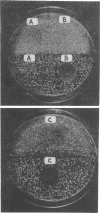Abstract
Proteus mirabilis is not killed by polymyxin B, normal serum, or sodium deoxycholate. Exposure to polymyxin B renders the cells susceptible to killing by the latter two agents. The data suggest that this synergism is due to polymyxin B-induced surface changes. The results point out an inadequacy of existing methods of screening for antibiotics; they fail to detect agents which, while showing no in vitro effect on growth, may alter a resistant organism so that it becomes more susceptible to other antimicrobials or host defense mechanisms. A method is described which can be used to detect such cell surface-modifying agents.
Full text
PDF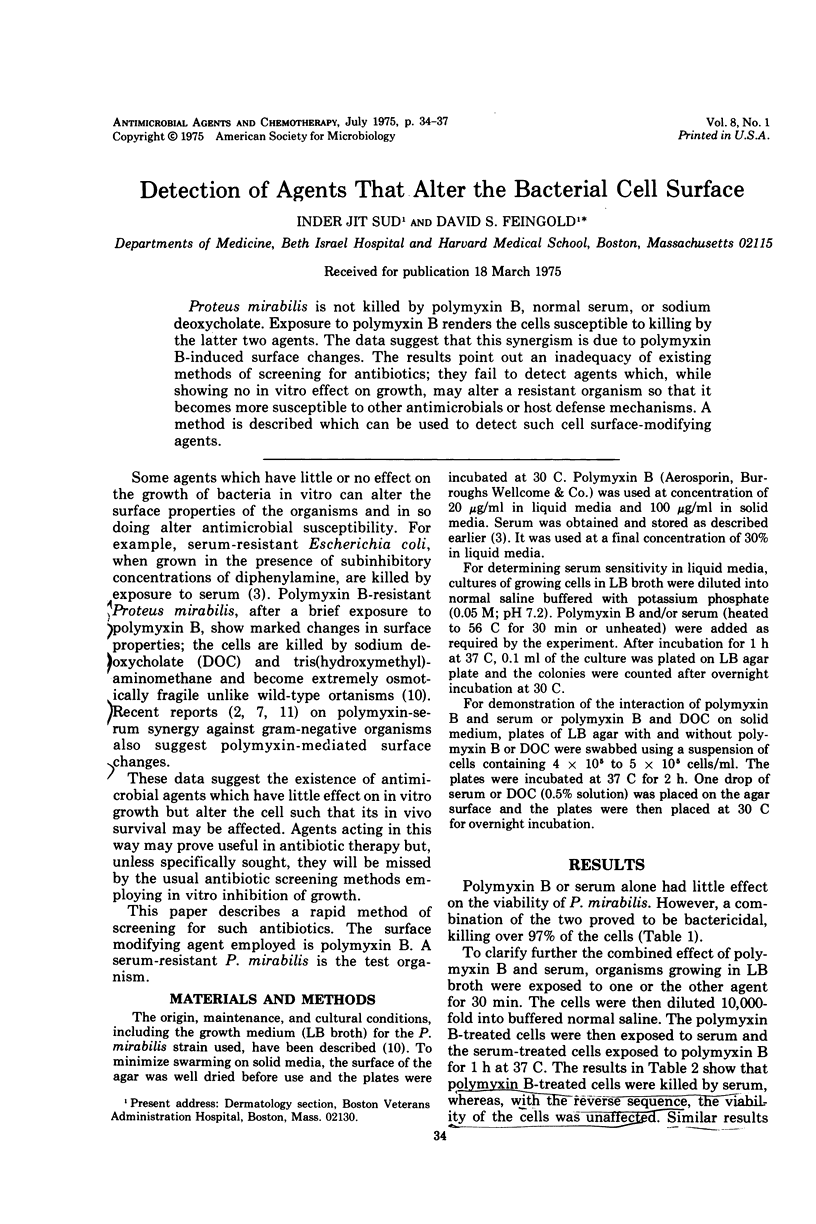
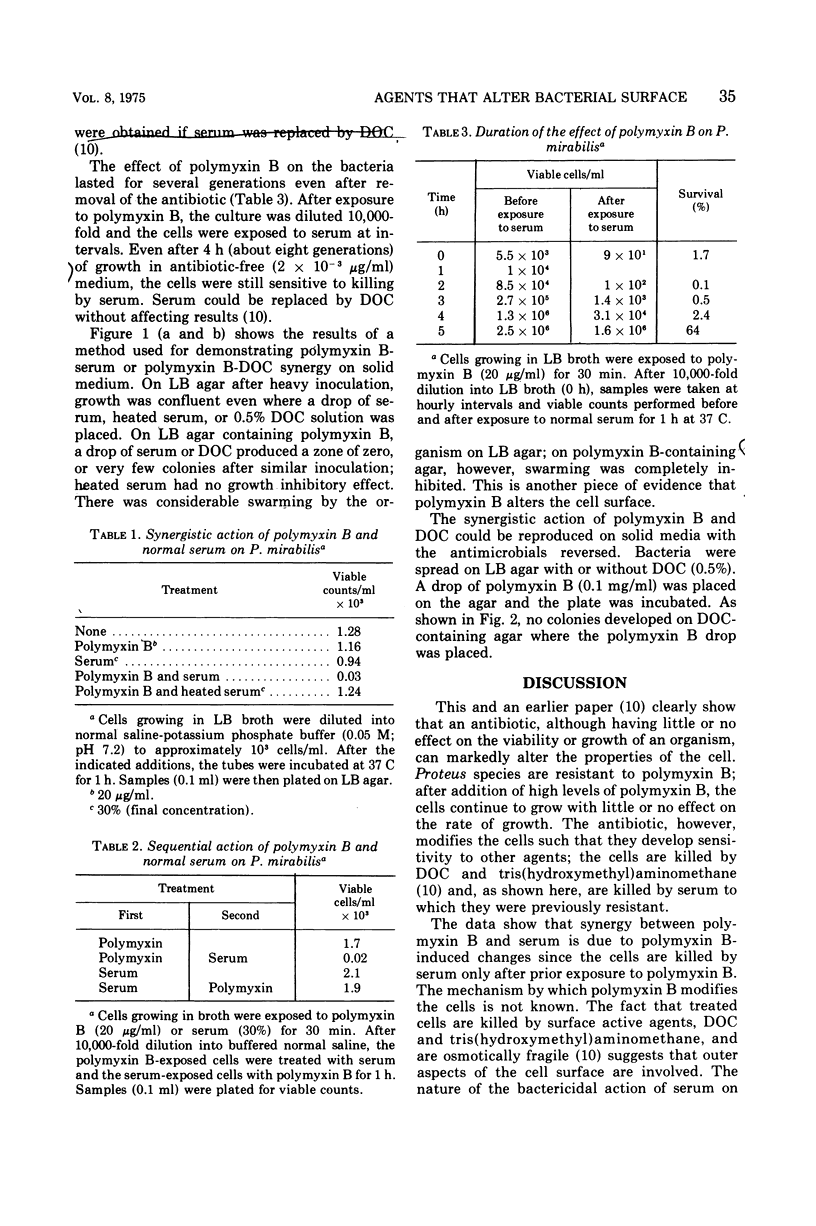
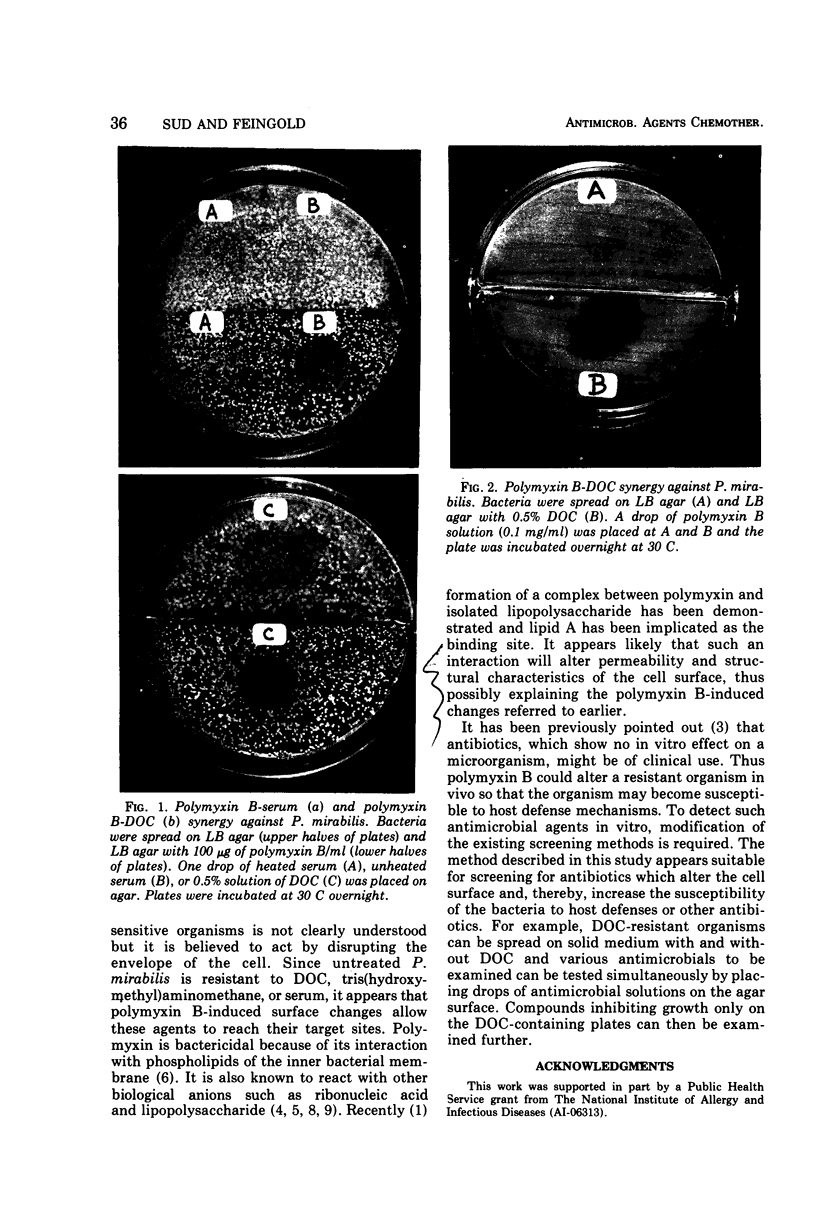
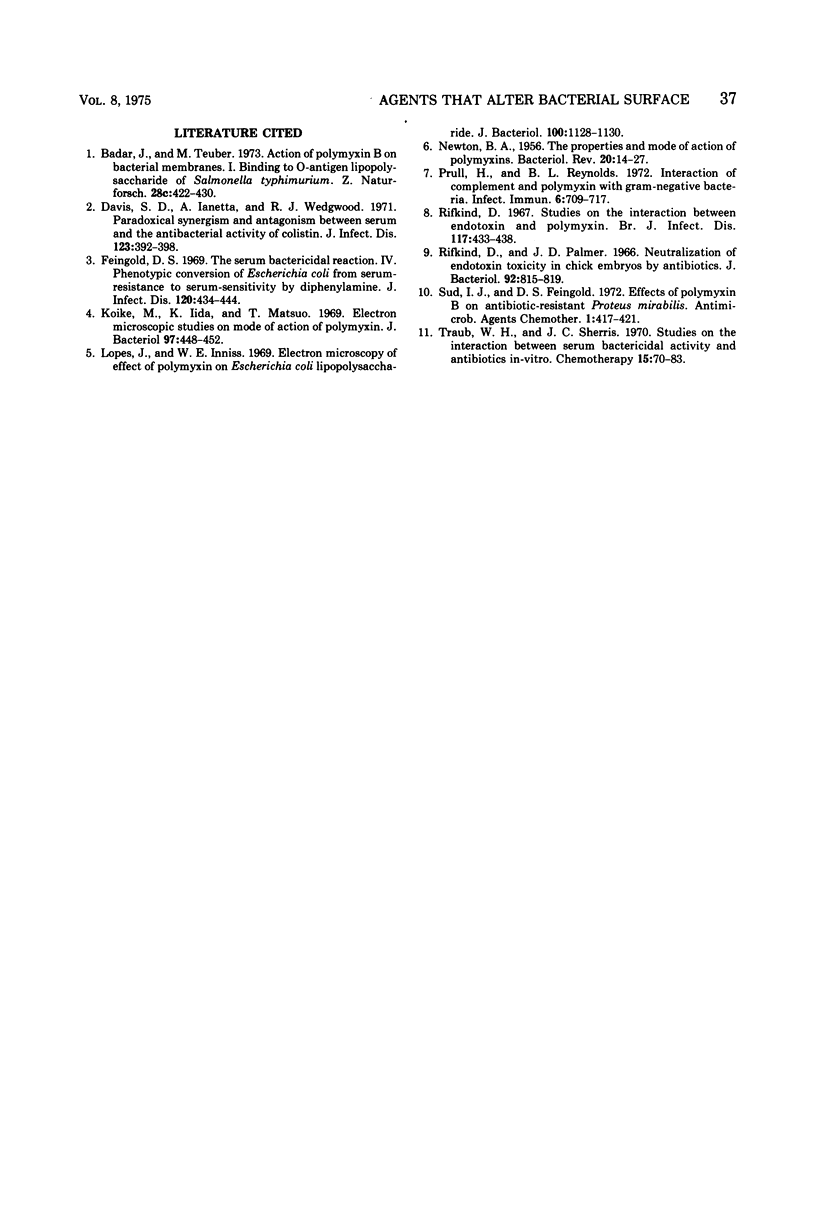
Images in this article
Selected References
These references are in PubMed. This may not be the complete list of references from this article.
- Bader J., Teuber M. Action of polymyxin B on bacterial membranes. 1. Binding to the O-antigenic lipopolysaccharide of Salmonella typhimurium. Z Naturforsch C. 1973 Jul-Aug;28(7):422–430. [PubMed] [Google Scholar]
- Davis S. D., Iannetta A., Wedgwood R. J. Paradoxical synergism and antagonism between serum and the antibacterial activity of colistin. J Infect Dis. 1971 Apr;123(4):392–398. doi: 10.1093/infdis/123.4.392. [DOI] [PubMed] [Google Scholar]
- Feingold D. S. The serum bactericidal reaction. IV. Phenotypic conversion of Escherichia coli from serum-resistance to serum-sensitivity by diphenylamine. J Infect Dis. 1969 Oct;120(4):437–444. doi: 10.1093/infdis/120.4.437. [DOI] [PubMed] [Google Scholar]
- Koike M., Iida K., Matsuo T. Electron microscopic studies on mode of action of polymyxin. J Bacteriol. 1969 Jan;97(1):448–452. doi: 10.1128/jb.97.1.448-452.1969. [DOI] [PMC free article] [PubMed] [Google Scholar]
- Lopes J., Inniss W. E. Electron microscopy of effect of polymyxin on Escherichia coli lipopolysaccharide. J Bacteriol. 1969 Nov;100(2):1128–1129. doi: 10.1128/jb.100.2.1128-1130.1969. [DOI] [PMC free article] [PubMed] [Google Scholar]
- NEWTON B. A. The properties and mode of action of the polymyxins. Bacteriol Rev. 1956 Mar;20(1):14–27. doi: 10.1128/br.20.1.14-27.1956. [DOI] [PMC free article] [PubMed] [Google Scholar]
- Pruul H., Reynolds B. L. Interaction of complement and polymyxin with gram-negative bacteria. Infect Immun. 1972 Nov;6(5):709–717. doi: 10.1128/iai.6.5.709-717.1972. [DOI] [PMC free article] [PubMed] [Google Scholar]
- Rifkind D., Palmer J. D. Neutralization of endotoxin toxicity in chick embryos by antibiotics. J Bacteriol. 1966 Oct;92(4):815–819. doi: 10.1128/jb.92.4.815-819.1966. [DOI] [PMC free article] [PubMed] [Google Scholar]
- Rifkind D. Studies on the interaction between endotoxin and polymyxin B. J Infect Dis. 1967 Dec;117(5):433–438. doi: 10.1093/infdis/117.5.433. [DOI] [PubMed] [Google Scholar]
- Sud I. J., Feingold D. S. Effect of polymyxin B on antibiotic-resistant Proteus mirabilis. Antimicrob Agents Chemother. 1972 May;1(5):417–421. doi: 10.1128/aac.1.5.417. [DOI] [PMC free article] [PubMed] [Google Scholar]
- Traub W. H., Sherris J. C. Studies on the interaction between serum bactericidal activity and antibiotics in vitro. Chemotherapy. 1970;15(2):70–83. doi: 10.1159/000220669. [DOI] [PubMed] [Google Scholar]




